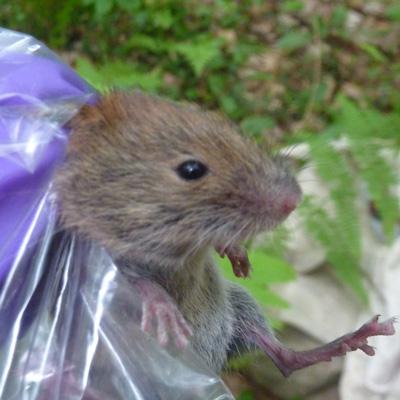The Effects of Foundation Species Removal on Rodent Community Composition in Eastern Hemlock (Tsuga canadensis) Forests

Eastern hemlock is an important tree species in New England that stabilizes microclimate and supports wildlife. Unfortunately, eastern hemlock abundance is declining from effects of the invasive sap-sucking insect, hemlock woolly adelgid (HWA). The loss of eastern hemlocks in New England forests may impact community composition of ecologically important forest-dwelling small mammals (rodents and shrews).
To determine if small mammal biodiversity and composition differ between HWA-invaded hemlock forests and healthy hemlock forests, NSRC researchers examined small mammal communities at Harvard Forest in Massachusetts. The experiment included four treatments: unmanipulated hemlock forest, unmanipulated hardwood forest to simulate a hemlock stand 50 years after HWA invasion, girdled hemlocks to simulate effects of HWA invasion, and logged forest to simulate prevention of spread of the HWA by removing hemlock and hardwood trees. Researchers captured small mammals in live traps in June-July 2013. Traps were set at dusk and checked early morning. Captured animals were identified, marked with non-toxic ink or Passive Integrated Transponder tags, and released. Researchers made a total of 140 captures in 18 nights.
Hardwood forest had the most captured species (10) and the most total captures (54). The white-footed mouse was the most captured species in the hardwood forest. Data suggest that presence of HWA in hemlock forests does affect small mammal communities. Girdled forest had only one more species (eastern chipmunk) than the unmanipulated hemlock. Logged forest had the fewest species captured, suggesting that preemptive logging used in forest management to prevent spread of HWA may decrease presence of southern red-backed voles, southern flying squirrels, and smokey shrews.
